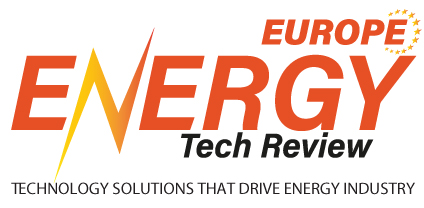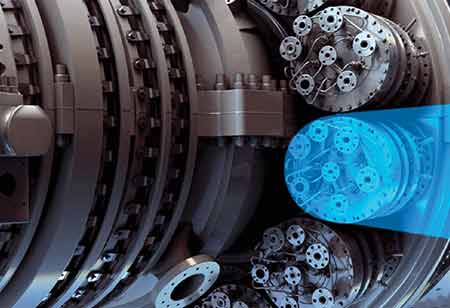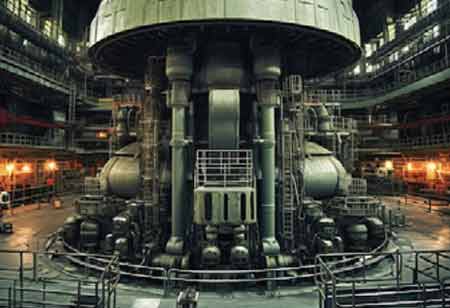CLOSE
Specials
I agree We use cookies on this website to enhance your user experience. By clicking any link on this page you are giving your consent for us to set cookies. More info
Be first to read the latest tech news, Industry Leader's Insights, and CIO interviews of medium and large enterprises exclusively from Energy Tech Review
Thank you for Subscribing
Pioneering Advanced Well Control for a Greener Future
Green drilling promotes efficient and eco-friendly resource extraction by leveraging advanced technologies for proactive well control, thereby enhancing safety and minimizing environmental impact throughout the well lifecycle.

By
Energy Tech Review | Tuesday, October 28, 2025
Stay ahead of the industry with exclusive feature stories on the top companies, expert insights and the latest news delivered straight to your inbox. Subscribe today.
Fremont, CA: Green drilling is a sustainable approach to energy resource extraction, aiming to minimize environmental disturbances throughout the well's lifecycle. This holistic approach includes site selection, preparation, drilling operations, completion, and abandonment. Modern well control technologies enhance safety and mitigate environmental risks, making it a crucial part of the energy resource pursuit.
Evolving from Reactive to Proactive Well Control
Traditionally, well control in drilling operations has been reactive, focused on containing a "kick"—an uncontrolled influx of formation fluids into the wellbore. However, green drilling has shifted this paradigm toward a more proactive and preventive approach. By harnessing advanced technologies, green drilling aims to anticipate and mitigate risks before they escalate, thereby enhancing safety and reducing environmental impact.
At the core of this evolution is real-time monitoring and data analytics. Modern drilling operations rely on a network of strategically placed sensors that continuously track critical parameters, including pressure, temperature, flow rates, and the properties of the drilling fluid. The vast volumes of data collected are analyzed using sophisticated algorithms, often powered by machine learning and artificial intelligence. These tools detect subtle anomalies that may signal the early stages of a kick, enabling timely and targeted interventions to prevent serious incidents.
Innovative Technologies Enhancing Well Control
Another transformative development is Managed Pressure Drilling (MPD), which allows precise control over downhole pressure conditions. Unlike conventional techniques that rely on adjusting mud weight, MPD utilizes closed-loop systems to regulate annular pressure in real-time. This enables drilling in formations with narrow pressure margins, maintaining bottom-hole pressure just above or below the formation pressure to minimize the risk of kicks and lost circulation. As a result, MPD enhances operational efficiency while reducing the potential for fluid releases and formation damage.
Today’s environmentally friendly mud systems incorporate biodegradable components and non-toxic additives, providing improved wellbore stability and efficient cuttings transport with minimal environmental risk. Advanced mud circulation technologies, including high-efficiency solids control equipment such as centrifuges and degassers, further enhance sustainability by enabling continuous fluid recycling, thereby reducing waste and minimizing the consumption of fresh chemicals and water.
Equally critical to well control are the latest advancements in blowout preventer technology. Electrically actuated blowout preventers (E-BOPs) represent a significant leap in safety and responsiveness. By replacing traditional hydraulic systems with streamlined electric power mechanisms, E-BOPs offer faster activation, more precise control, and real-time monitoring capabilities. Integrated smart sensors continuously monitor key system parameters, supporting predictive maintenance and significantly reducing the likelihood of failure under extreme conditions.
Comprehensive wellbore integrity management is essential throughout the entire lifecycle of a well. This includes robust design, high-quality casing and cementing, and ongoing surveillance. The use of corrosion-resistant alloys and advanced casing configurations strengthens structural integrity. At the same time, technologies such as distributed temperature sensing (DTS) and distributed acoustic sensing (DAS) enable continuous detection of issues like fluid ingress or casing deformation. Proactive integrity management, supported by regular diagnostics and inspections, plays a crucial role in preventing environmental hazards such as sustained casing pressure and fugitive emissions.
The synergy between green drilling principles and advanced well control technologies is undeniable. By embracing these innovations, the industry is moving towards a future where energy extraction is conducted with minimal environmental impact. The focus on prevention, real-time data, and intelligent systems not only enhances safety and operational efficiency but also significantly lowers the ecological risk associated with drilling activities. This commitment to continuous improvement in well control is a cornerstone of responsible resource development and a key enabler of a more sustainable energy future.

Copyright © 2025 Energy Tech Review. All rights reserved






